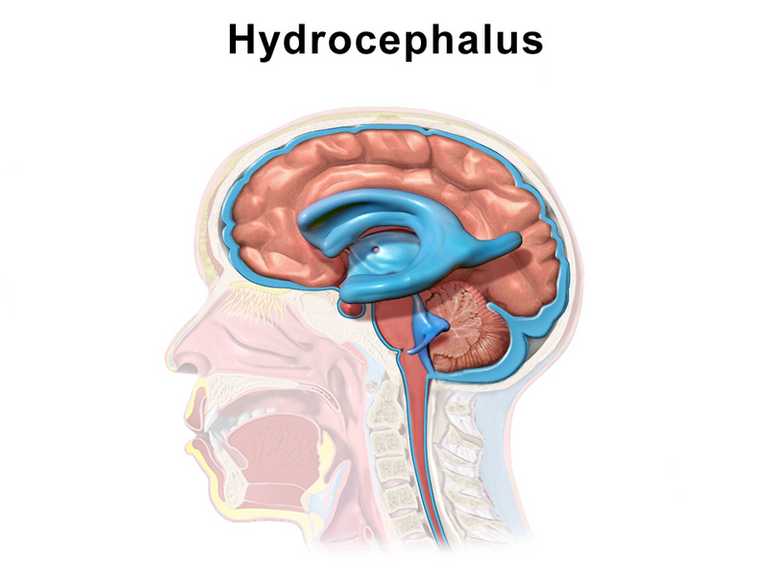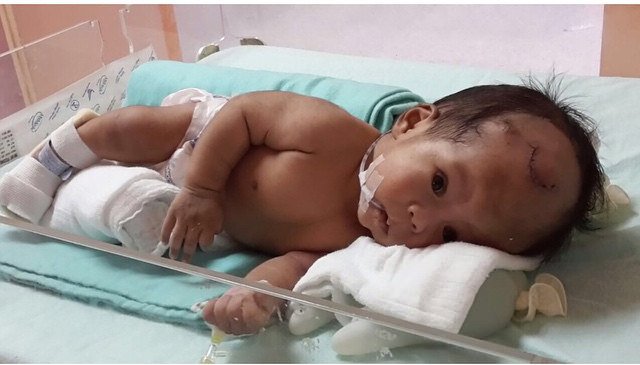Babies are such a delight to behold. Those soft tiny little hands and feet can make one feel euphoric. Nothing beats the joy of planning the arrival of a new baby, but all that joy turns sour when you are told your baby won't be normal. A lot of families deal with the guilt and pain of having an abnormal child.
Most birth defects are caused by either genetic factors, infections, radiation, or exposure to certain drugs. Birth defects are broadly classified into two;
- Structural birth defects: these defects are a result of improper development of body parts in babies and they include heart defects, cleft lip, and neural tube defects like spinal bifida.
- Functional or developmental birth defects: these are basically related to a problem with how a body part or body system works or functions. These problems can include:
- Nervous system or brain abnormalities. These include intellectual and developmental disabilities, behavioral abnormalities, speech or language difficulties, seizures, and movement trouble. Some examples of birth defects that affect the nervous system include Down syndrome, Prader-Willi syndrome, hydrocephalus, and Fragile X syndrome.
- Sensory problems. They include problems with sensory organs such as hearing loss and visual problems, such as blindness or deafness.
- Metabolic disorders. These involve the body's inability to produce certain chemicals that are responsible for getting rid of waste. Examples of metabolic disorders are phenylketonuria and hypothyroidism.
- Degenerative disorders. These are conditions that may not be observed at birth but over time, they cause one or more health challenges in other parts of the body. Examples of degenerative disorders are muscular dystrophy and X-linked adrenoleukodystrophy, which leads to problems of the nervous system and the adrenal glands.

What, then, is Hydrocephalus?
Hydrocephalus is the build-up of fluid, not just any fluid but cerebrospinal fluid, in the cavities that are deep inside the brain. New cerebrospinal fluid of about one pint is produced every day by the brain while the old fluid becomes absorbed into blood vessels. When a blockade of obstruction occurs, the fluid that is supposed to drain into blood vessels builds up within the brain.
The extra fluid puts pressure on the brain and can cause brain damage. This condition is most common in babies while still at the gestation stage; although cases of babies/toddlers developing it after being given birth have been reported widely. The building of cerebrospinal fluid in the brain can be of different types, namely;
- Congenital
- Acquired, or
- Non communicating
- Communicating
- Ex vacuo
For the purpose of this article, we will be focusing on congenital hydrocephalus.
Congenital Hydrocephalus
The dictionary meaning of congenital means something (a condition) that is present at birth. Hence, congenital hydrocephalus means the one that is present in babies at birth. While the cause or causes of this condition remains poorly understood and still under extensive research, scientists have linked congenital hydrocephalus to two factors - infection in the mother or developmental defects in fetuses while in gestation.
Infections, simply put, are diseases that are caused by pathogenic organisms when they enter or invade the body. These organisms could be bacteria, fungi, parasites, or viruses. Some common types of infections are common cold, flu, urinary tract infections (UTI) food poisoning, measles, polio, and even Covid-19. Infections can be gotten from sources such as sinks, dry, or wet surfaces where harmful organisms are contacted by
susceptible persons and can be transmitted to others through water droplets, infected blood tissues, unprotected sex, etc.
What infection then causes hydrocephalus? Rubella (better known as three-day measles or German measles) or mumps which are both viral infections are most notorious for hydrocephalus that is gotten through a mother. Symptoms in rubella virus infection include mild fever and rashes while mumps is characterized by swollen, painful salivary glands, headache, fatigue, fever, and loss of appetite.
Both rubella and mumps are highly contagious as they both affect the salivary glands and, as such, can be transmitted through the air by respiratory droplets via coughing and sneezing. The pathogens simply limit the development of the fetus's brain and obstruct the normal synthesis and draining of the cerebrospinal fluid.
Apart from pathogen-induced, hydrocephalus can also be caused by birth defects as a result of inadequate developmental processes of the fetus in the womb. Be it due to pathogens or birth defects, congenital hydrocephalus's symptoms range from breathing difficulty, unusually big head, occassional vomitting and generally poor feeding, drowsiness, seizures, etc., to bulging fontanel and unwillingness to bend the neck.
The case of Becca
Becca, a 24-year-old pregnant lady, had severe cravings for beef, in fact, all her meals consisted of beef daily since she was five months gone. She had burgers and a beef stew as often as she could and after her 8th-month doctor's appointment, she was told that her baby had fluid in its head, a clear-cut case of hydrocephalus.
A few months later, Becca delivered a charming little princess via a cesarean section and watched her baby go through several surgeries and medications until she got better. So yes, hydrocephalus is treatable and can be managed by professional doctors.
The hydrocephalus was suspected to have been due to infection of Becca during pregnancy by a bacterium known as Escherichia Coli or simply E. coli. The bacterium lives in the intestines of cattle and can contaminate beef during the process of slaughtering or grinding. Symptoms such as diarrhea and vomiting are common to this bacterial infection.

This does not mean that all pregnant women should avoid beef. It is important to ensure all beef products are cooked well to kill any living organism present in the beef. Unpasteurized milk is also a means of infection, as such, it is advised that individuals especially expectant mothers consume pasteurized milk and its products.
Final thoughts
On a final note, it is important to be conscious of one's health and diet during pregnancy and to consider your baby's health when making health or food-related choices. Here are a few food options that are beneficial to a baby's development:
- Eat foods rich in healthy fat and oil such as avocados
- Ensure that all dairy and beef products are pasteurized and properly cooked.
- Eat foods rich in fiber such as bran cereals
- Boost your vitamin A and C levels with broccoli
- Avoid alcoholic drinks
- Avoid smoking
Thank you!
References
- https://www.nhs.uk/conditions/hydrocephalus/causes/
- https://www.cdc.gov/infectioncontrol/spread/index.html
- https://www.nichd.nih.gov/health/topics/birthdefects/conditioninfo/types
- https://www.medicalnewstoday.com/articles/181727#types
- https://www.ssmhealth.com/cardinal-glennon/fetal-care-institute/head-spine/hydrocephalus
Thanks for your contribution to the STEMsocial community. Feel free to join us on discord to get to know the rest of us!
Please consider supporting our funding proposal, approving our witness (@stem.witness) or delegating to the @stemsocial account (for some ROI).
Please consider using the STEMsocial app
app and including @stemsocial as a beneficiary to get a stronger support.